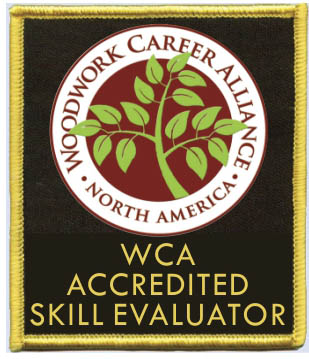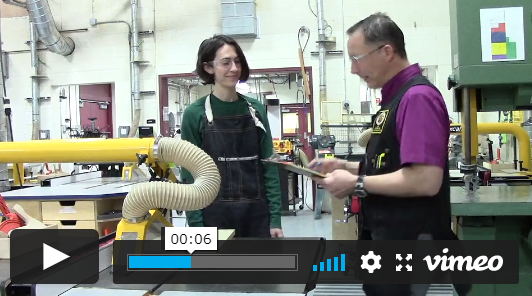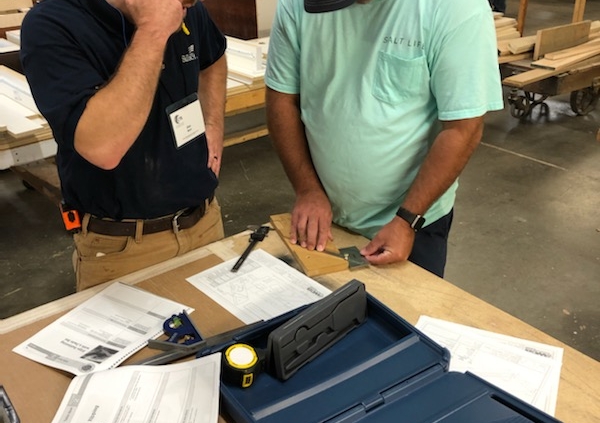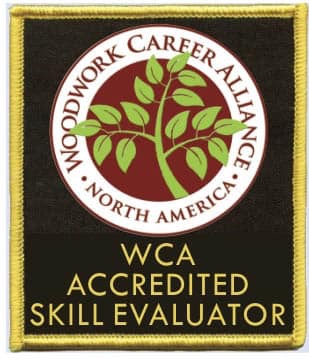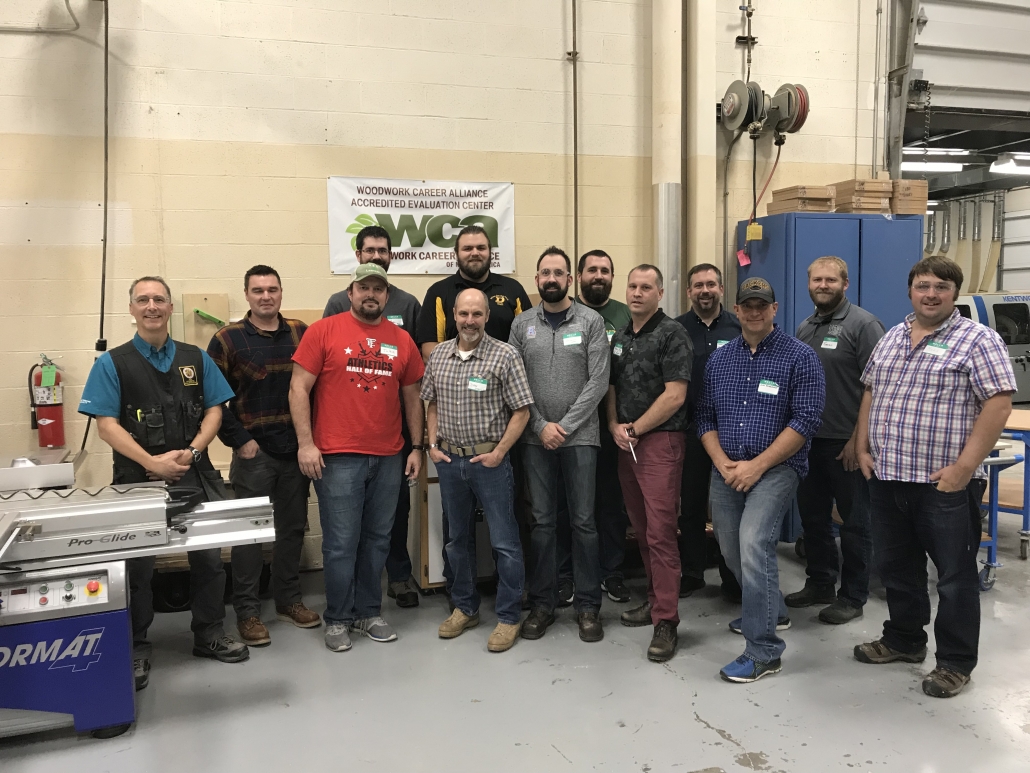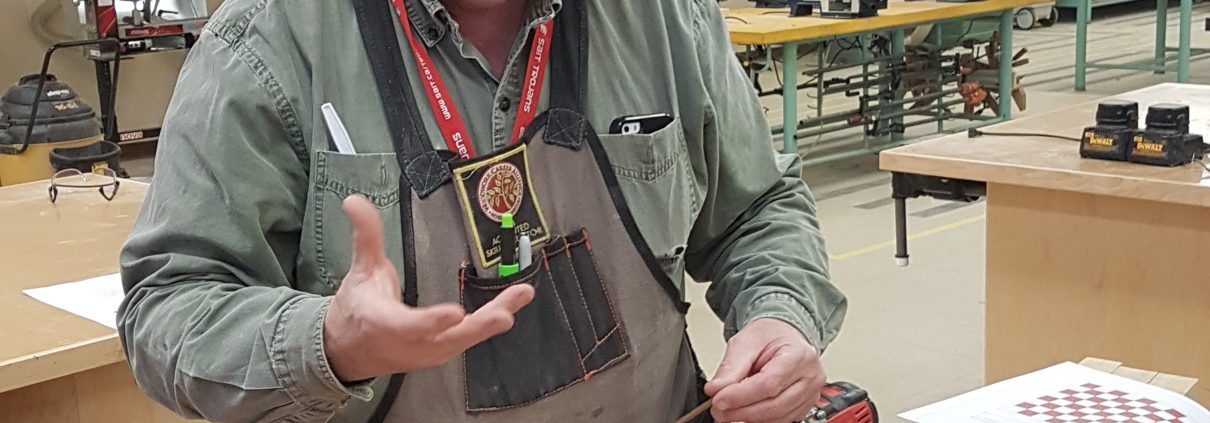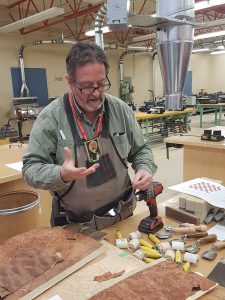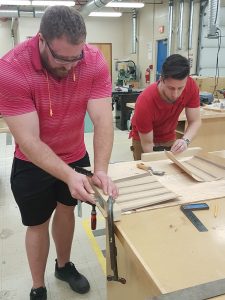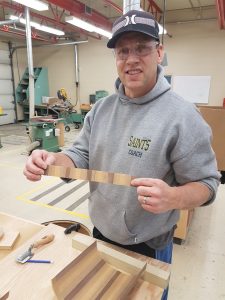Six Thumbs Up for WCA’s New Online ASE Training Program
Last fall, the Woodwork Career Alliance of North America rolled out an online training program for accredited skill evaluators (ASE).
The initial thrust of the new program is providing more opportunities for high school and postsecondary woodworking instructors to attain ASE status. By doing so, they are able to use the WCA’s Skill Standards to teach and test their students on a wide variety of woodworking operations from reading a tape measure and basic layout through safely setting up and running a table saw or jointer. They are also able to provide students with the chance to earn a WCA Sawblade Certificate.
Pathways reached out to a half dozen instructors who were among the first to take the online ASE training for their feedback. The consensus opinion was overwhelmingly favorable, further validating the WCA’s investment to offer ASE training online.
Following is a summary of each respondent’s online training experience, as well as why he or she chose to become an ASE.
 Noah Werner, the technology education teacher at the School District of Greenwood, WI, teaches woodworking to students in grades 7 through 12.
Noah Werner, the technology education teacher at the School District of Greenwood, WI, teaches woodworking to students in grades 7 through 12.
“These are all high and middle school students, both boys and girls, with a wide variety of skill ranges,” Werner said. “A large number of my students come into my classes with little to no experience in woodworking. I have had a few that had done some work outside of school with a family member or friend but typically this is their first experience in the wood’s lab.”
Werner was the first educator to take the WCA’s ASE training course online. He offered a candid critique of the experience.
“The part that I struggled with the most was the (lack of) instant feedback that is given during a traditional in-person setting,” Werner said. “The other item I missed the most was the ability to see a true professional teach me exactly how they do things.”
That said, Werner opined that the positives of the online training program far outweighed any negatives.
“I could not be more impressed with the online training,” Werner said. “Both of my instructors, Patrick Molzahn and Greg Larson, were top notch and made the process quite enjoyable. I loved the flexibility the online training offered. I could do it on my time, which allowed me to slow down and really understand what the training was all about. I think having a reputable online training option for instructors will allow more instructors to become certified.”
Webster noted that becoming an ASE will help him take his woodworking courses to a higher level. “I am always looking to further my program and provide the best possible experience for my students. Being able to evaluate students for the WCA Sawblade Certificate allows me to provide them with a skill set that is both transferable to an industry setting and sets them up to be life-long woodworkers.
“My focus in all of my class is both career and life ready. I want my students to leave my classes with a knowledge base that will help them with their future careers but also provide them with some skills to make their lives more enjoyable.”
*^*^*
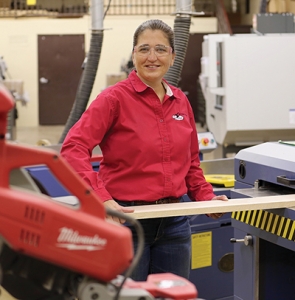 Staci Sievert is a technical education teacher at Seymour High School of Seymour, WI. After teaching social studies for 22 years, Sievert transitioned into technical education four years ago after the school district was unable to successfully fill the position. She is currently teaching introduction to woodworking through Woods 3.
Staci Sievert is a technical education teacher at Seymour High School of Seymour, WI. After teaching social studies for 22 years, Sievert transitioned into technical education four years ago after the school district was unable to successfully fill the position. She is currently teaching introduction to woodworking through Woods 3.
Asked why she decided to become an ASE, Sievert said, “The more we can get our students’ learning aligned with industry standards the better it will be both for the students and for industry. All tech ed students can benefit from being certified as it means they have met benchmarks for taking accurate measurements and safely running equipment to industry standards.”
Sievert gave kudos to the online ASE training course. “The online training was excellent. Other than my dislike for videotaping myself, it was great. I could plan the training at night when it was most convenient and my assessor’s feedback –both written and during our virtual meeting — was exceptionally thorough. Our virtual meeting lasted 30 minutes. It was a valuable conversation. I enjoyed the opportunity to ask questions and receive feedback from an expert in the woodworking field.”
*^*^*
Chris Hedges, was recently hired as program manager of the Cabinetmaking and Architectural Woodworking program that will debut this fall at Hocking College of Nelsonville, OH. He’s been teaching woodworking for 10 years and has also run a custom woodworking business.
Hedges said he decided to take the online ASE training “in order to offer an industry recognized credential to both traditional and non-traditional students.” He added, “I felt it was comprehensive enough to ensure that I have been adequately trained and prepared to qualify potential registrants as skilled users of relevant machinery.”
Hedges said he hopes the new woodworking program will “establish Hocking College as a nationally recognized educational program with a mission that focuses on training both the mind and the hand.”
*^*^*
Three of the WCA’s newest ASEs – Ron Dorn, Roy Ward and Craig Honeysett — are fellow instructors at Webster High School in Webster, WI.
Dorn has been teaching woodworking for 20 years. He said he took the training to become an ASE so that he could offer his more advanced students in the introductory woodworking class he teaches an opportunity to earn their Sawblade Certificate. “I see the certificate as a way for students and programs to set themselves apart,” Dorn said. “The training course showed that the WCA takes great care in precision and safety.”
Ward is a technology education teacher who has taught woodworking for 22 years. He is teaching an introductory woodworking class that occasionally includes a student with a more intermediate skill set. “I liked the idea of students earning a Sawblade Certificate as well as our program receiving CTE incentive grant dollars.”
Ward noted training and evaluating students for the Sawblade Certificate will be limited to those demonstrating more advanced skills and commitment. “We don’t plan on cranking out Sawblade Certificates,” he said. “We are excited though, to be able to do so for the students who deserve the recognition.”
Honeysett is a technology education aide. He’s been a woodworking instructor for five years and like Dorn and Ward is teaching woodworking newbies. “I like the idea of a program that provides the students with both a path to follow and rewards for achieving their goal.”
Honeysett and Ward both cited numerous advantages to online training, including: no travel expenses, no need to take time off, the ability to complete the program at his own pace and the advantage of using Webster High’s woodworking equipment for the testing component of the ASE program.
Asked to point out any downsides to the online training, Ward observed, “We are very competent and comfortable setting up, adjusting and using the equipment. If we were not, it would be very beneficial to have an instructor to show us what to do. When you take a class virtually, you have to find the information versus a teacher presenting it to you. It is also easier to ask in-person versus in an email.”
Learn more about WCA accredited skill evaluators and training.

